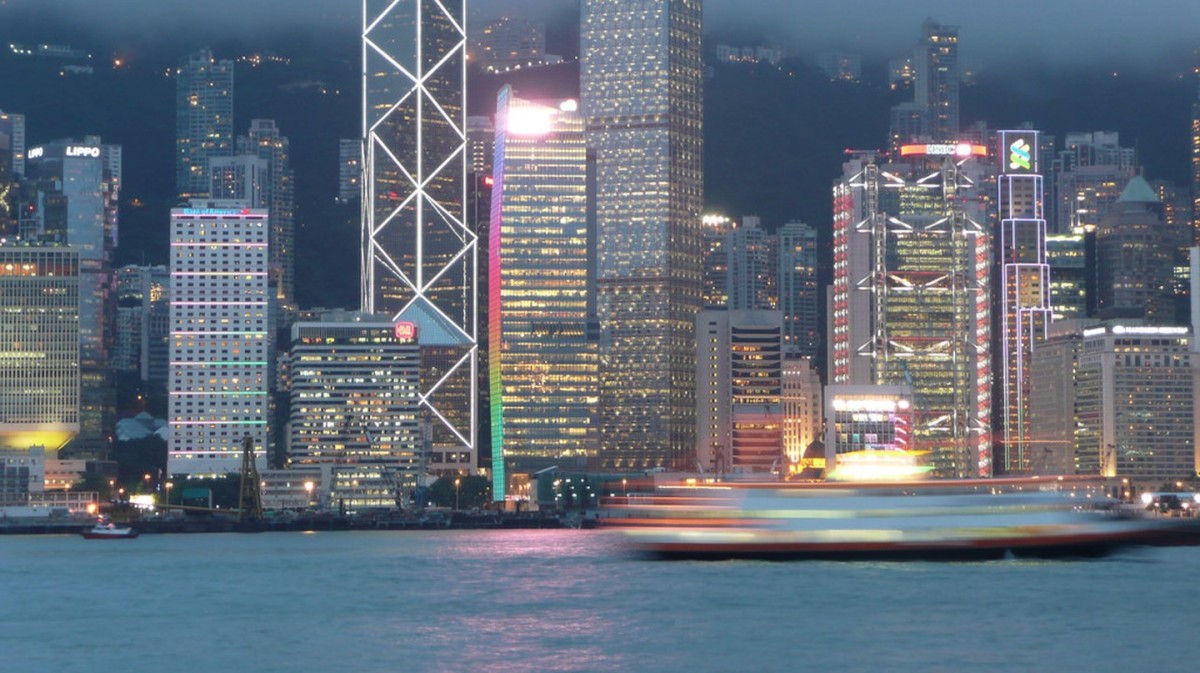By J.B.Browne

Hong Kong's "beauty" is its instagrammable skyline. But the city's vibrant clash of East-West architecture is so unique that you need not only look up to glimpse iconic formations. From skyscrapers to underground stations and street-level concrete water pipes, 'Fragrant Harbour' blesses the eye with an impressive array of structures and buildings. Here we've rounded up the best landmarks the city has to offer, guiding you off-grid in the hopes of nourishing that architectural soul.
Cloud Castles

Bank of China Tower
1 Garden Road, Central

Locals have given the nickname 'One Knife' because it resembles a char siu meat cleaver from certain angles.
Let's start with the obvious, the star quarterback of Hong Kong's cityscape skyline. Iconic doesn't even come close to describing how vital Bank of China Tower (BOC Tower) is to the city's already impressive skyscraping silhouette. Designed by Chinese-American master architect I.M. Pei – whose buildings dazzled the world, including that famous glass pyramid in Paris – the Pritzker Prize winner took inspiration by the shape and structure of bamboo for this 70-story behemoth. Pei's signature angular geometric patterns boast towards the heavens as the triangular glass walls glisten in the sun. As with all things prestige in Hong Kong, BOC Tower is prime status real estate in the heart of Hong Kong's financial district. A beautiful collision of modern architecture blended with traditional Chinese design; no other building embodies the cultural essence of Hong Kong as much. From the street, it's even a pole star navigator bestowing bearings on pedestrians finding their way in the concrete jungle.

Did you know?
BOC Tower has bad Fengshui. When it opened in 1990, neighboring banks reported substantial financial losses, while other businesses in the vicinity filed for bankruptcy. So what did any rational mind do? Blame the design of the building for the catastrophe.
Lippo Centre
89 Queensway, Admiralty

Not the highest, but wonderfully unique. A team player.
Another iconic landmark on the island's cluttered lineup is the Lippo Centre, which saw completion in 1988. Octagonal in shape, the twin-towered buildings are impossible to miss. They feature a unique design with dark blue reflective glass that some say resemble koala bears clinging to trees – can you see them? The building's signature design are the strange but alluring bears as C-shaped extrusions that externally appear as refractive curtain walls. Those of you with a passion for architecture can visit the Lippo Centre inside. Better still, take a tram through Admiralty to catch the best street-level angle from the outside. Designed by American architect Paul Rudolph, the Lippo Centre has a large common atrium and a 4-story retail podium at its base.

Did you know?
In July 2019, part of the Lippo Centre's ceiling collapsed in front of the elevator foyer. Fortunately, no one was injured.
Opus Hong Kong
53 Stubbs Road, Mid-Levels East

Up high on the peak and so, therefore "skyscraping," Opus Hong Kong is the brainchild of Australian architect Frank Gehry. A true master of modern architecture – other works include the Guggenheim Museum in Bilbao and the Walt Disney Concert Hall in Los Angeles – Ghery describes the exclusive residence of Opus as a "very lively and exciting" project. Aside from exuding Ghery's signature postmodern "twist style," Opus works because of the drama of the mountains behind it, which provide a natural contrast within the landscape. Commissioned by Swire Properties, Opus was completed in 2012. The curved columns of enclosed glass reach up to 12-stories high, emulating yet juxtaposing the tree-studded hillside surrounding it.

Did you know?
Only twelve units occupy the exclusive Opus, one of which made elitist history last year as the most expensive property in Asia.
Jockey Club Innovation Tower
11 Yuk Choi Road, Hung Hom

Jockey Club Innovation Tower looks and feels like everything its name suggests – take your pick: avant-garde time machine or avant-garde cloud ship. Designed by British-Iraqi architect Dame Zaha Hadid, who died in 2016, the structure is her first and only in Hong Kong. Fittingly, Hadid's legacy runs deep within education as Jockey Club Innovation Tower is home to PolyU's School of Design, which has become a new driving force in the development of Hong Kong as an Asian design hub.
This remarkable building is similar to architecture found in futuristic Shenzhen and other major cities in Mainland China. An anomaly of sorts against Hong Kong's aging modernist design, but a glimmer of hope for the vision of Innovation Tower as it presents itself as a unique opportunity to reexamine local and multidisciplinary environments.
"The fluid character of the Innovation Tower is generated through an intrinsic composition of its landscape, floor plates, and louvers that dissolves the classic typology of the tower and the podium into an iconic seamless piece." – Zaha Hadid (1950-2016)

Did you know?
Construction work began in 2009 with completion in August 2013. The net floor area can accommodate about 1,800 staff and students.
M+
Austin Road West, West Kowloon Cultural District

A sneaky addition to the list because it's nearing completion. M+ is worthy of inclusion due to how it dominates the West Kowloon shoreline. The t-shaped game cartridge-in-console design stands just 310ft or 20 stories high tall. Still, it has an explosive presence loud with the simple elegance of Herzog & de Meuron's design. The dark green-black ceramic glazed tiles seem to echo the personifications of the city. M+ is Hong Kong's latest museum of visual culture, forming a new hub of the West Kowloon Cultural District. It will encompass 20th and 21st-century visual art, architecture, design, and moving images from Hong Kong, China, Asia, and beyond. With inevitable pandemic delays, the project is due for completion this year.

Did you know?
M+ is set to become one of the world's largest museums of modern and contemporary visual culture.
As he would refer himself, J.B. Browne is a half "foreign devil" living with anxiety relieved by purchase. HK-born Writer/Musician/Tinkerer.
The views do not necessarily reflect those of DotDotNews.




















Comment